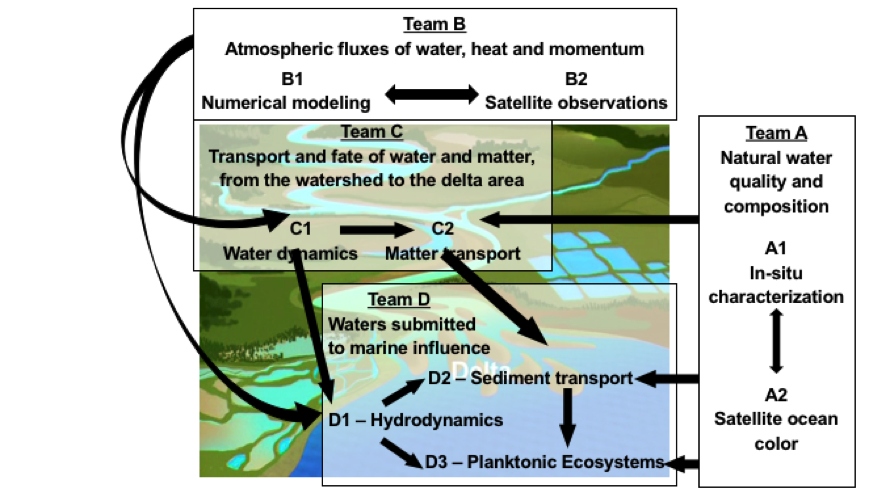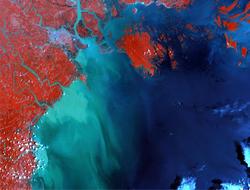Research Teams
Research inside LOTUS is organized through four teams strongly connected. Team A focuses on the composition of natural waters in the watershed-ocean continuum, Team B on atmospheric fluxes, Team C and Team D on the fate and transport of water and associated matter over respectively the continental and estuarine-marine regions.

Scheme of LOTUS scientific organization
In terms of methodology, in order to characterize and study the physical and biogeochemical processes involved in the circulation and fate of water and associated matter from the watershed to the ocean, we use a combination of numerical models and multi-sensors satellite and in-situ observations. The use of those tools is indeed mainly relevant when used in a complementary way. A large quantity of in-situ measurements was gathered through punctual research projects between LOTUS partners, and other field trips are planned. The development and implementation of numerical modeling and satellite data analysis tools were also initiated and will be continued and strengthened.
- Satellite observations

Satellite optical image from Red River estuary
Satellite measurements provide observations of good temporal and spatial coverage and over long periods but restrained to the surface and submitted to the uncertainties of the algorithms used to treat them.
- Numerical Modeling

Grid and topography of SYMPHONIE model focusing over the Vietnam coast
Models provide a 4-D virtual representation, allowing to perform sensitivity analysis to test the effect of various forcings, and to explore past and future periods not accessible to observations, but submitted to the uncertainties of the modeling approximations and errors.
- Field observations

Field trip on the Van Uc River
In-situ measurements can explore the vertical dimension and provide real but punctual data (in time and/or space).